The Gorilla Glass making company the “Corning” is making this fabulous glass for the smartphone and tablets screen protection. Today, the Company introduced its latest version, the “Gorilla Glass 4” Corning claims the new material is twice as tough as its predecessor Gorilla Glass 3.
The company, last year, leaded with 80 percent of the market. Apple iPhone 6 and iPhone 6 Plus uses the Gorilla Glass and lots of Android smartphones like Samsung Galaxy series uses the Gorilla Glass as well. This Corning Gorilla Glass 4 will be entering the market to make up with alternate display covers like synthetic sapphire. The new Glass is already in full production. And will be going to be available before the end of this year, said the “Dave Velasquez”, Gorilla Glass marketing Director.
Velasquez explained that they have achieved this level by loads of tests. However, tests revealed that 70 percent of the screen gets damaged due to the dropping on hard surface like concrete or asphalt. But fortunately, in terms of Corning Gorilla Glass 4 the new material was about twice as likely to survive a 1-meter drop onto a rough surface than Gorilla Glass 3. In these drops, with the cover glass hitting face down right on the floor, Gorilla Glass 4 survived the fall up to 80 percent of the time. As in comparison, soda-lime glass, a non-hardened glass, used in bottles, and windows, broke in these tests nearly 100 percent of the time.
The cover glass is going to break less often, particularly on a rough surface, Velasquez said. Let’s wait for the devices coming with these Gorilla Glass 4 in the market. And we will be watching the results of this new Gorilla Glass series.
Read more about Corning Gorilla Glass 3 (previous version)

Gorilla Glass 3 is not only chemically strengthened, but its atomic configuration is formulated so that the glass is less brittle. On top of that, fundamentally tougher and more damage resistant even before chemical strengthening. In addition, Gorilla Glass 3 has three times the scratch protection over its predecessors. Not only that, it is a 40 % reduction in visible scratches and a 50 % increase in glass’s retained strength after a flaw occurs.
If you liked this article, then please subscribe to our Blog for more updates like this. You can also find us on Facebook, Instagram, Twitter, Pinterest, LinkedIn and YouTube.

